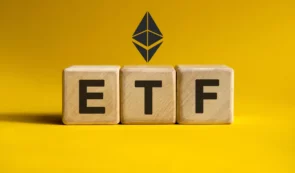Ethereum: How Green is the Network After the Transition to PoS?

Earlier this year, Ethereum (ETH) completed the transition to the consensus Proof-of-Stake (PoS) mechanism.
So, how much energy does Ethereum’s Merge save?
The upgrade reduces energy consumption by 99.84% to 99.99%.
According to a new paper published by Patterns, the energy saved by The Merge is equivalent to the energy consumption of countries like Ireland and Austria.
Before The Merge, the Ethereum core network operated with a consensus proof-of-work (PoW) mechanism, where miners acted as nodes and processed transactions across the network.
Mining on the ETH blockchain was energy-intensive and required miners to use computing devices such as graphics cards and ASIC chips.
Consumer GPUs, which many of the miners likely had, are inefficient in terms of energy consumption when mining. Individual miners sometimes had hundreds of these cards in a single rig.
As Ethereum mining grows in popularity and hashing power (the total amount of energy connected to the network) rapidly increases, concerns are being raised about the energy consumption of the circuit and its environmental impact.
To mitigate the problem, the ETH community decided to switch to PoS. Unlike PoW, networks using this mechanism do not have miners competing with each other for computing power.
Instead, nodes, called “stakers” here, only need to include a certain amount of coins (at least 32 ETH to be precise) in a staking contract and require a low-power computing device to become a validating node in the network.
On September 15 of this year, the Merge took place and completed Etherium’s transition to a PoS-based system.
Electricity consumption
As for the actual amount of energy consumed on the network before the merger, the study looks at several estimates based on different scenarios.

Assuming all miners use the most efficient mining machine available, Etherium’s pre-PoS energy consumption is about 418 MW.
However, as mentioned earlier, few miners used efficient ASIC mining machines – GPUs were more popular. Using the highest possible GPU available before the merge (Nvidia RTX 3090Ti), the estimated power is 2.23 GW, which is significantly higher than the other figure.
In reality, miners used various equipment for mining, and there were other energy costs, such as equipment cooling, so the actual cost must be much higher.
“A tracker by Kyle McDonald estimated Ethereum’s power demand at 2.44 GW before the Merge”, the report states.
In the worst-case scenario, i.e., if the prospectors got by on mining only and made no profits, the estimated power consumption is 9.21 GW.
The study sets the PoS lower limit of consumption at 36 kW and the upper limit at 675 kW – a staggering difference.
















